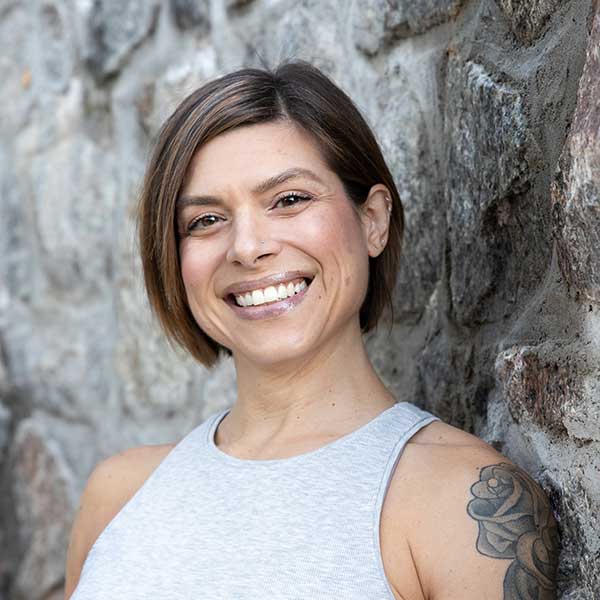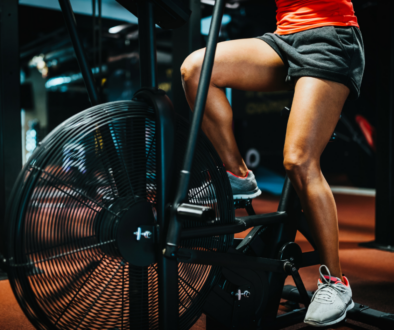What is Fitness? Part 3: Strength
What is Strength? Strength is:
A. The ability of the neuromuscular system to produce internal tension to overcome an external force.
B. The amount of force a muscle can exert against an external load (weights, bands, gravity, etc.).
C. Dictated by the ability of the nervous system to recruit and activate muscles.
D. My favorite component.
E. All of the above.
https://www.instagram.com/p/9cbLHaFU_k/?taken-by=aliciacrosstraining
It’s E. All of the above!
We train for strength differently based on goals:
1. Endurance and Stability: Everyone starts here with three sets of 12-15 repetitions. Since strength is dictated by the nervous system, the first 10-12 weeks are all about changes in the nervous system. This is why frequency is key. You’re not going to improve at something if you only practice once a week.
2. Hypertrophy: Increasing the size of a muscle for therapeutic purposes (rebuilding an atrophied muscle after an injury) or for aesthetic goals. Increasing muscle size for appearance is bodybuilding. People who develop their physique might be ordinary gym-goes who like the look, fitness models, or bodybuilding competitors (most famously, Arnold Schwarzenegger). Hypertrophy is accomplished with very high repetitions (15-25).
https://www.instagram.com/p/BKqr2RYjlhV/?taken-by=arnoldswarsneger
3. Max Strength: Moving heavier weights and chasing PR’s (personal records). As with hypertrophy, this is a goal for both fitness enthusiasts and competitive athletes. The sport of lifting heavy things is Powerlifting and consists of three lifts: squat, deadlift, and bench press. Max Strength is achieved with periodization (a program that keeps the athlete progressing without getting injured or mentally burned out) and very low repetitions (1-5). While size can help, a powerlifter does not need to be big to be strong: Stefi Cohen weights 123 pounds and deadlifts over four times her body weight.
https://www.instagram.com/p/Ba1tDpPBO6L/?taken-by=steficohen
Not interested in breaking records or strutting across the stage in your bikini? You still need to train for strength. It’s how we preserve our body and our mind, improve our appearance and confidence, and alleviate pain.
Strength training builds bone density. It builds lean muscle mass, which is crucial to maintaining a healthy body weight, especially as we age. Starting at around age 40, we lose about 8% of our lean muscles each decade. This means we’re burning less calories all day long. This is one of the reasons why people start to slowly pack on the pounds and why it gets tougher to lose weight with age. Studies have shown that leg strength better correlates to longevity and brain health as compared with other health markers and poor grip strength can indicate disabilities and cognitive decline later in life. Strength training also lowers the risk of cardiovascular disease, diabetes, and falls and helps control blood sugar. Lifting heavy (over 85% of your maximum) helps lower anxiety.
Have pain in your low back, knees, or shoulders? I love foam rolling, but good luck alleviating pain with self-myofascial release alone. You need to strengthen the weak, underused muscles in your upper back, core, and glutes. Don’t have pain (yet)? Great! Prevent it with a strength training routine.
Strength training improves appearance and self-confidence. Many of my clients have the goal of getting more “toned.” What they really want is a little muscle definition and a good shape (let’s face it, gravity is not kind to certain parts of the body). And they are not going to get that from cardio. Like many of you, I’ve faced my own struggles with self-confidence and I can tell you that when you pick up that heavy weight at the gym, you feel like you can do anything!
How much do you need?
The American College of Sports Medicine (ASCM) recommends that adults strength train 2-3 days each week with 2-4 sets of 8-12 repetitions per exercise (10-15 repetitions for middle-aged adults).
Trainers tip: Avoid machines. Free weights and body weight exercise are far superior. Also, studies have shown that you can get many of the same results with bands. I love them. They are inexpensive and they take hardly any space in your home gym or luggage.
Up next, Balance!
Alicia Cross is a Certified Personal Trainer, Wellness Coach, and Yoga Instructor with more than 15 years’ experience working with clients in classes and one-on-one. She is a yogi, meditator, vegan, and lifter of heavy things. If you’re ready to discover the strength and peace that comes from within, email Alicia@AliciaCrossTraining.com.
Related Posts:
Weightlifting Belt for Back Pain?



